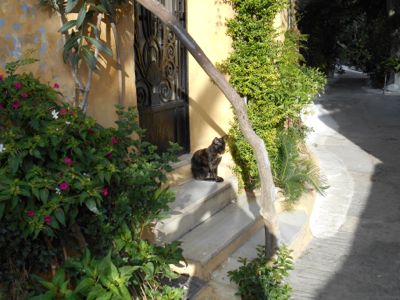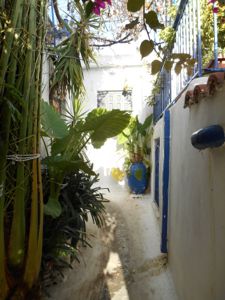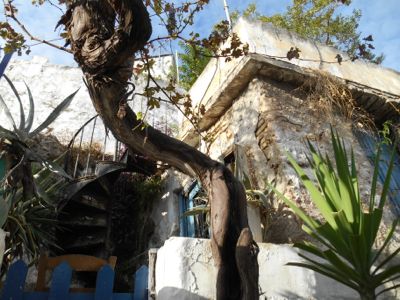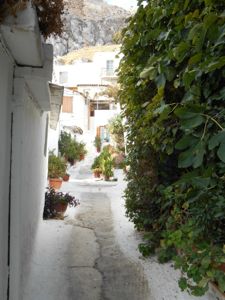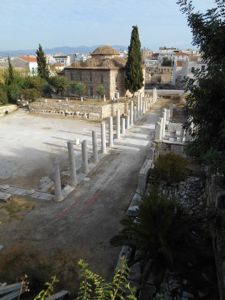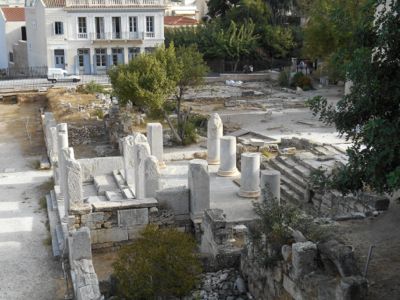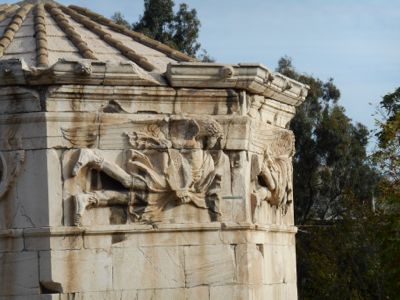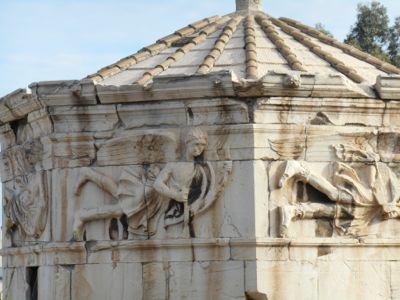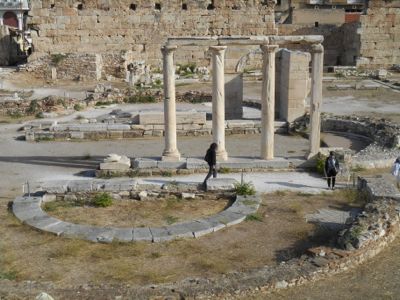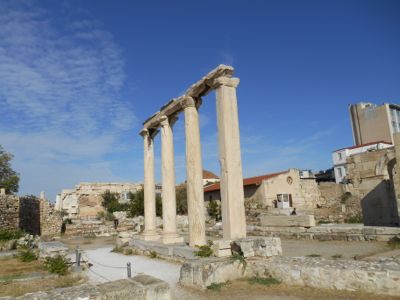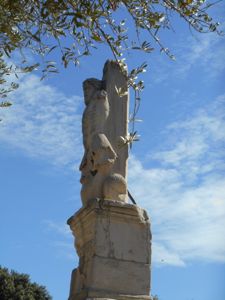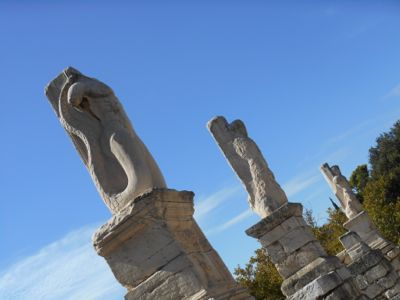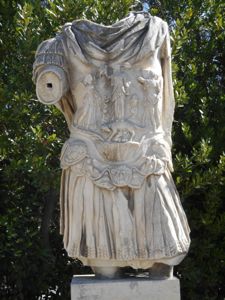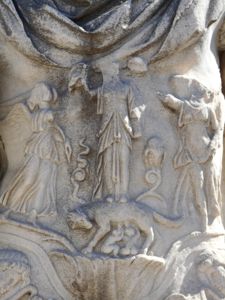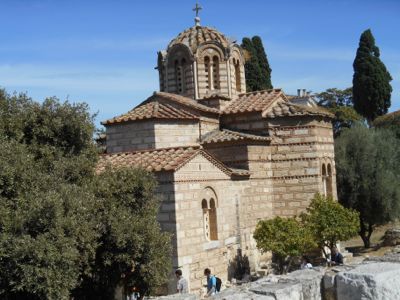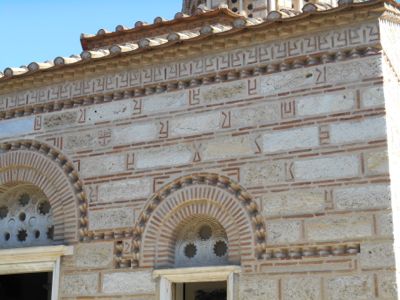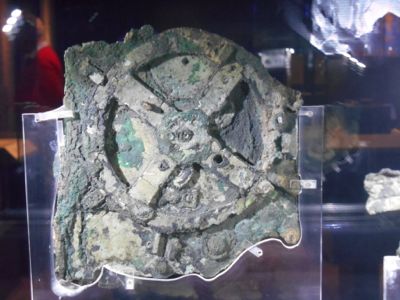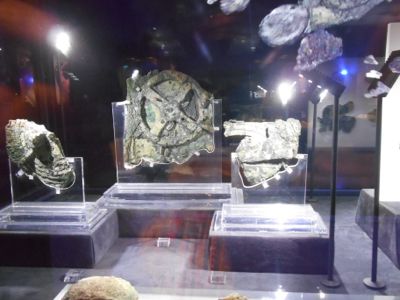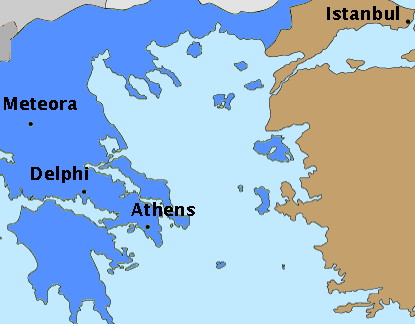Athens - Part Two
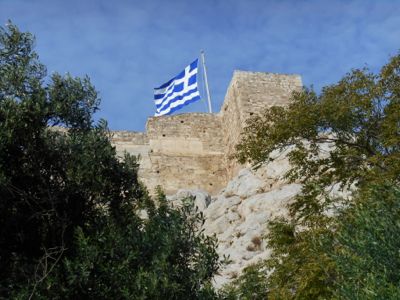
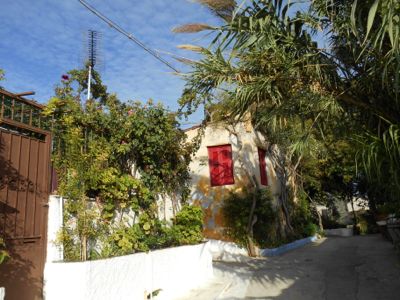
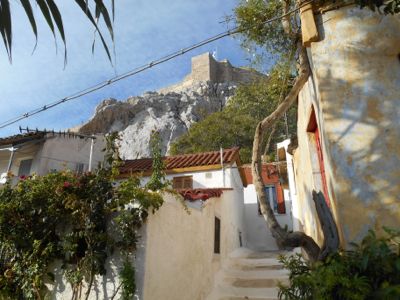
This morning, I continued my walking tour of Athens. I picked it up again near my hotel where I had stopped before taking
the tour to Delphi and Meteora.
The first thing was a walk through this neighborhood below the Acropolis. (You can see the flag flying from the Acropolis wall.)
This area has a very Mediterranean feel to it. I felt almost like I was on one of the Greek islands.
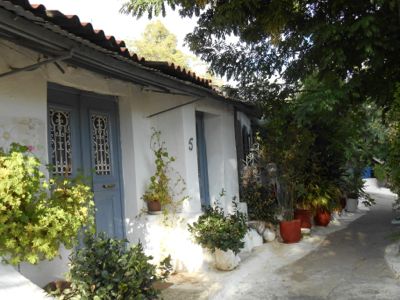
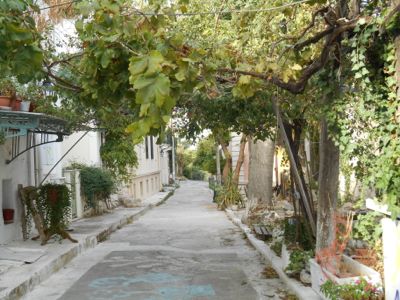
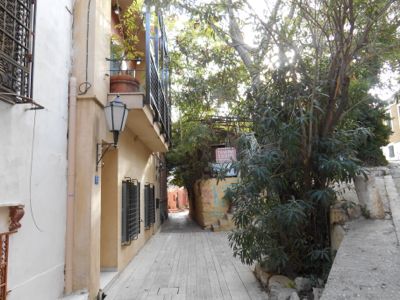
Roman Forum and Hadrian's Library
The Roman Forum (or Roman Agora) was the Roman center of Athens.
The "Tower of the Winds" has carvings representing the winds on each side of this octagonal tower.
Hadrian's Library was a center of culture and learning.
Very little remains today.
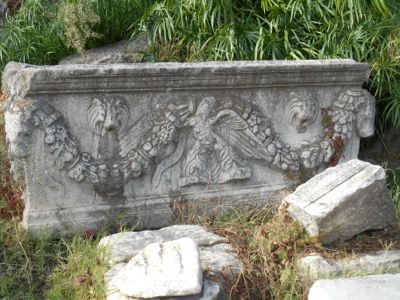
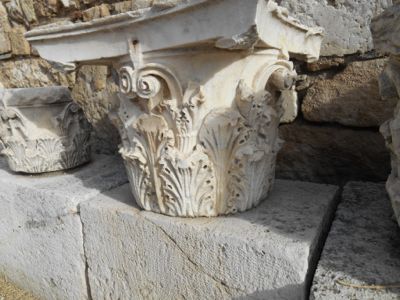
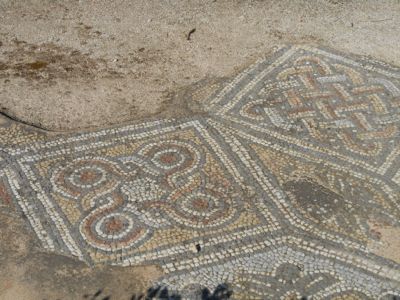
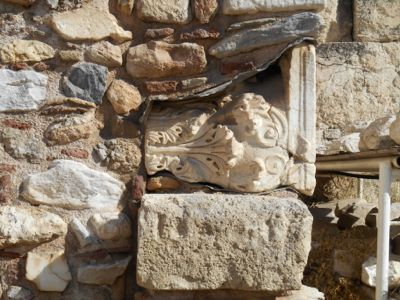
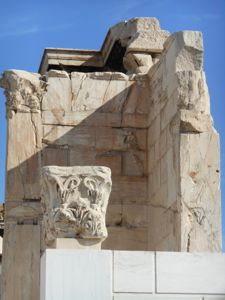
Ancient Agora
The Agora[*] was the city center of ancient Athens. It was a shopping, religious, and cultural center. There is also the small Agora Museum, which displays some of the items excavated.
|
pottery and jars |
statues and statuettes |
early ballots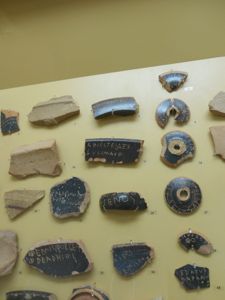
|
Temple of Hephaistos
National Archaeological Museum
This is a museum[*] I could easily have spent two days in. As it was, I only had one afternoon since I had to fly home the next morning. Again my Rick Steves iPod app came to my rescue. It was a very good guide to "just the high points" of the museum. It took me through each room and told me which were the most important or most interesting items there. Here are my "highlights of the highlights".|
Mycenaean gold funeral mask ("Mask of Agamemnon") 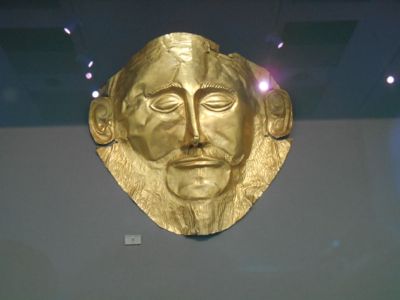
|
a figure from 550 BC (coloring still visible) 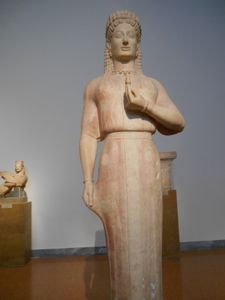
|
glass bowl[*] (1st century BC) 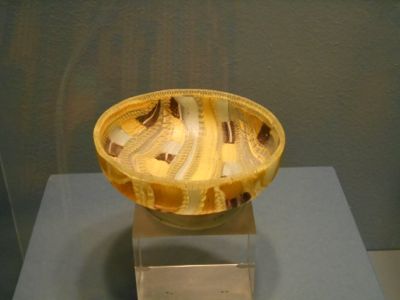
|
wall covering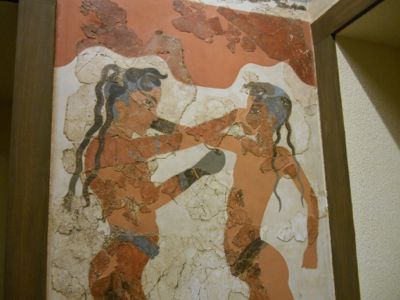
|
bronze of Zeus or Poseidon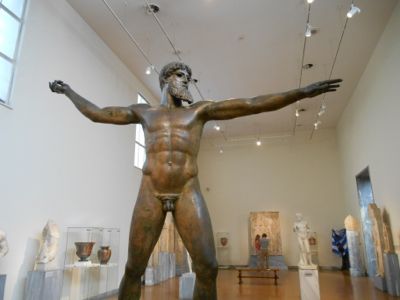
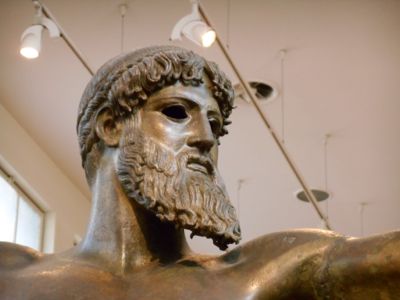
|
horse and jockey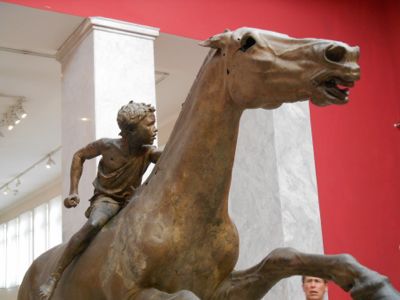
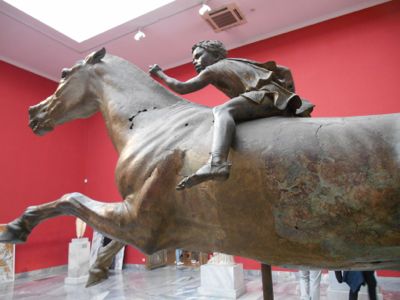
| ||
|
small copy (from ~250 AD) of 40ft statue of Athena which stood in the Acropolis 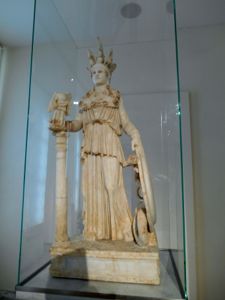
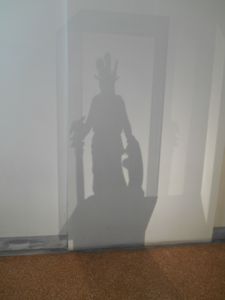
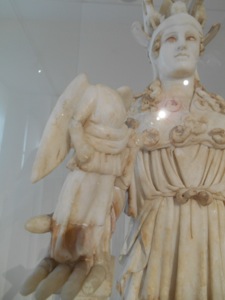
|
funeral steles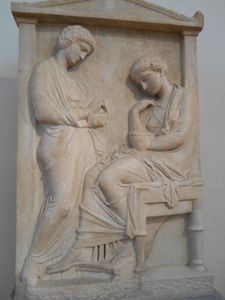
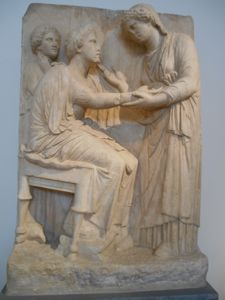
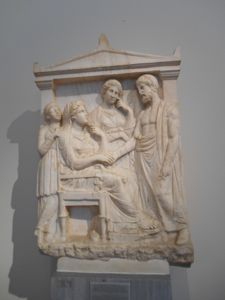
| ||
Aphrodite, Pan, and Eros[*]
(100 BC from Delos)
This statue really caught my interest. Is Eros rescuing Aphrodite from Pan? Or is he helping Pan seduce Aphrodite?
(100 BC from Delos)
This statue really caught my interest. Is Eros rescuing Aphrodite from Pan? Or is he helping Pan seduce Aphrodite?
This statue[*] was recovered from a shipwreck.
Part of it had been buried in the mud and part had been exposed to the seawater.
I found it very interesting to see the effect on the marble.
The "Antikythera Mechanism"[*] has been described as the earliest preserved portable astronomical calculator.
It was found on the Antikythera shipwreck, preserved in the mud.
Several gears and dials are visible and scientists have determined that it was used to predict astronomical events.
(I had seen a PBS or History Channel special on it, so I was very interested to see it for myself.)
Goodbye
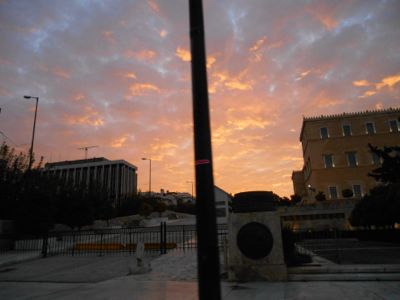
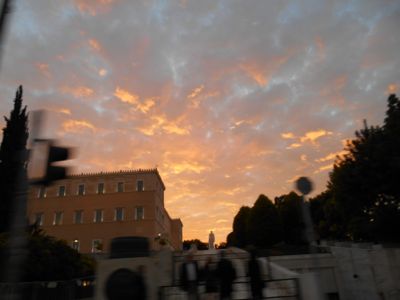
Then next morning, I headed to the airport for my flight home. On the way I saw this beautiful sunrise from the taxi window.


